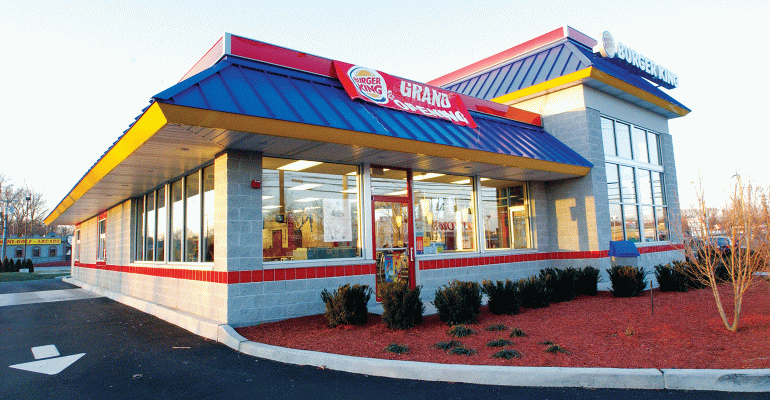Sales growth is encouraging Burger King operators to build new restaurants.
Since 3G Capital acquired Burger King in 2010, the chain’s average unit volume in the U.S. has risen from just under $1.1 million to $1.3 million, including 1.1-percent same-store sales growth in 2016.
The quick-service chain added 32 net new units in the U.S. and Canada last year, the company said Monday, compared with just one location the previous year.
It’s also “the highest metric we’ve seen in that region in many years,” Daniel Schwartz, CEO of parent company Restaurant Brands International Inc., said during the company’s fourth-quarter earnings call on Monday.
“Our unit economics are much stronger today,” Schwartz said. “That’s why we’re seeing interest from new and existing franchisees in developing the brand in the U.S.”
Quick-service burger chains have largely eschewed unit growth in recent years, particularly in the aftermath of the recession. Operators focused more on growing same-store sales, while capital spending efforts were concentrated on remodels.
But recently, several chains have restarted unit growth as same-store sales have recovered. The Wendy’s Co., privately held Arby’s and others have sought to generate more unit growth.
For Burger King, new unit growth would help it make up ground against its much larger rival McDonald’s Corp., which has more than 14,000 locations, compared with the more than 7,400 units Burger King has in the U.S. and Canada.
Restaurant Brands International executives said there’s plenty of room to add locations domestically.
“There’s no reason the Burger King brand can’t grow at an accelerated pace in the U.S.,” Schwartz said.
Accelerated growth of Burger King would be a bonus for RBI, which was created with 3G Capital’s acquisition of it in 2010, based on the idea that its brands can grow in international markets.
Burger King’s growth has thrived in places like Europe and Latin America since the acquisition, and the chain now has more locations outside the U.S. than domestically. In 2014, the company acquired the Canadian coffee and doughnut chain Tim Hortons based on the theory that it, too, could grow in international and domestic markets.
Tim Hortons has 3,801 locations in Canada, 683 units in the U.S. and 129 restaurants elsewhere. The chain added 200 total locations last year, and has joint venture deals in Asia, Europe and Latin America. It recently reached a deal in Mexico.
“We’re actively pursuing other strategic growth markets,” Schwartz said. “It takes time to enter into new partnerships.”
Burger King’s improving unit volume has come as a result of what the company calls a “consistent” marketing message. It has a used a balance of innovation and price-based marketing to lure customers.
Domestic same-store sales rose 1.8 percent in the fourth quarter, an improvement from earlier in the year. The company credited a Bacon King sandwich, as well as an 89-cent pancake deal that lured more customers at breakfast. The improvement also came despite a challenging quarter for the restaurant industry, when many brands were struggling to generate traffic.
“We’ve been quite consistent with our approach to marketing, with a balance of value and premium products like the Bacon King,” Schwartz said. “It’s more of the same. It helped us continue to drive growth for the business and our franchisees.”
Revenue in the fourth quarter increased 5 percent, to $1.11 billion, from $1.06 billion the previous year. Net income more than doubled, to $118.4 million, or 50 cents per share, from $51.7 million, or 25 cents per share.
Adjusted earnings before interest, taxes, depreciation and amortization increased 16.4 percent in the quarter, to $512.4 million.
For the year, revenue increased 2.3 percent, to $4.15 billion, from $4.05 billion the previous year. Net income tripled, to $345.6 million, or $1.45 per share, from $103.9 million, or 50 cents per share.
The results bested investor expectations on Monday, and the company’s stock rose nearly 2 percent in morning trading.
At Tim Hortons, same-store sales increased 0.2 percent in the fourth quarter and rose 2.5 percent for the year. In the U.S., same-store sales increased 3.6 percent for the quarter, or 9.4 percent on a two-year stacked basis. In Canada, Tim Hortons’ same-store sales fell 0.2 percent in the quarter.
The company said it is testing a Tim Hortons app that includes mobile payment, with plans to release it this year.
Contact Jonathan Maze at [email protected]
Follow him on Twitter: @jonathanmaze





